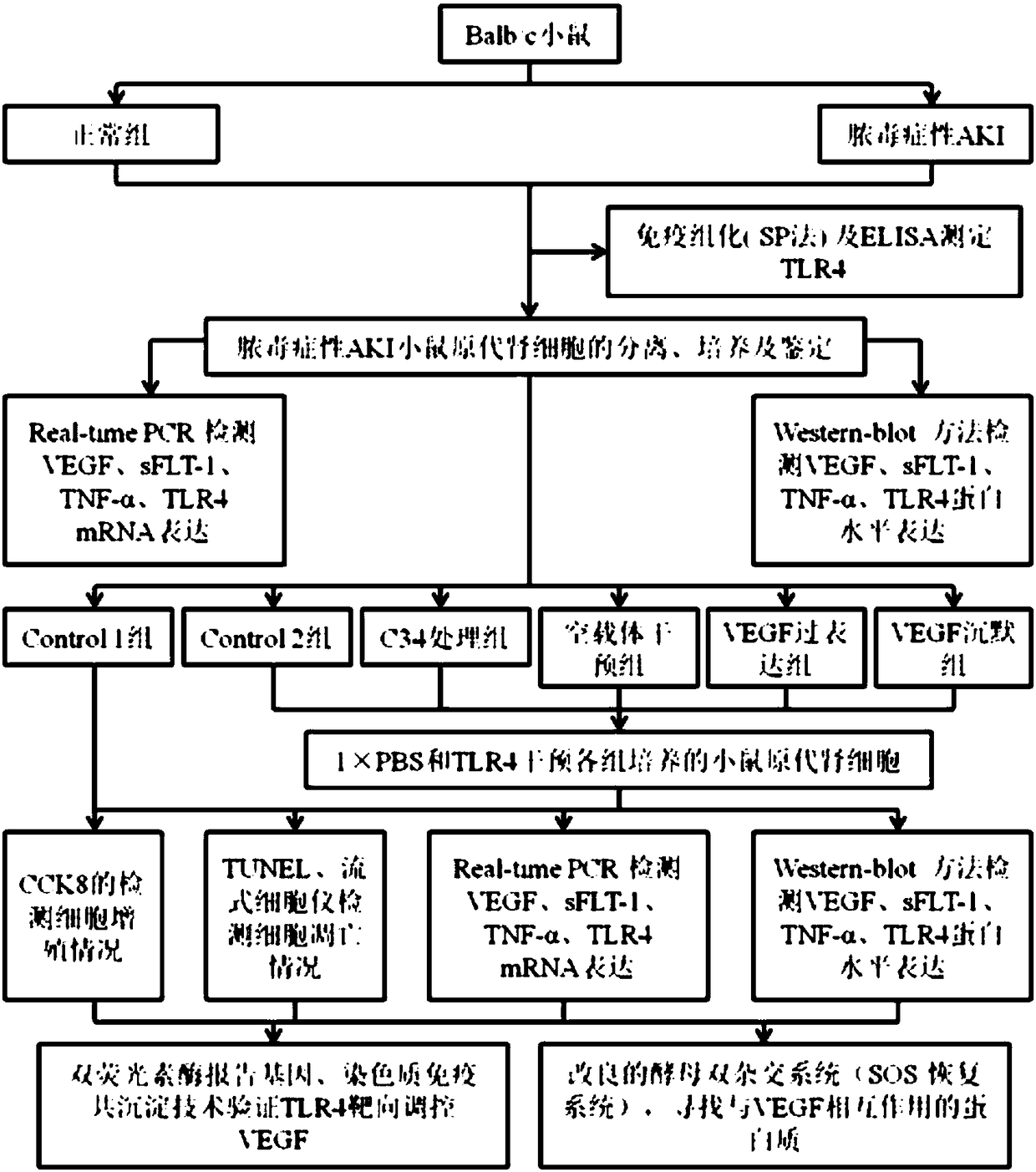Research method for applying TLR4 to curing acute kidney injury caused by sepsis
A technology for acute kidney injury and sepsis, which is applied in the medical field and can solve problems such as delay
- Summary
- Abstract
- Description
- Claims
- Application Information
AI Technical Summary
Problems solved by technology
Method used
Image
Examples
specific Embodiment approach 1
[0078] see as figure 1 Shown, the technical scheme that this specific embodiment adopts is: it carries out research analysis from cell experiment approach, and its research method is as follows:
[0079] 1. Establishment of septic AKI model in mice:
[0080] 1.1. A single intraperitoneal injection of LPS (10mL / kg) was used to prepare the model of septic AKI; 40 Balb / c mice were divided into two groups according to the random number table method, namely the control group and the model group, 20 in each group ; Normal saline (NS) control group: intraperitoneal administration of the same amount of normal saline; model group: mice were intraperitoneally injected with 10 mL / kg of LPS; fasted for 12 hours before modeling, free to drink, and free to drink and eat after modeling;
[0081] 2. Determination of animal modeling:
[0082] 2.1. The performance of the mice after stimulation: the control group was flexible in activities, free to drink water, erect hair, flexible in activiti...
specific Embodiment approach 2
[0134] see figure 2 , the technical scheme that this specific embodiment adopts is: it carries out research analysis from cell experiment approach, and its research method is as follows:
[0135] 1. Construct a mouse model of septic AKI, and transfect the lentiviral expression vector containing VEGF overexpression / silencing into septic AKI mice:
[0136] Balb / c mice were divided into 5 groups according to the random number table method, including 10 blank control groups; 4 groups of septic AKI group, 10 mice in each group, respectively: septic AKI control group, without Any intervention; Ad-GFP group; Ad-VEGF group; Ad-VEGF-ShRNA group. The model of septic AKI mice was the same as before, starting from the 10th day, Ad-VEGF and Ad-VEGF-ShRNA group mice were intraperitoneally injected with recombinant lentivirus containing Ad-VEGF and Ad-VEGF-ShRNA, Ad-GFP Group mice were transfected with a lentiviral vector containing only the GFP genome. The transfection method was once a...
PUM
 Login to View More
Login to View More Abstract
Description
Claims
Application Information
 Login to View More
Login to View More - R&D
- Intellectual Property
- Life Sciences
- Materials
- Tech Scout
- Unparalleled Data Quality
- Higher Quality Content
- 60% Fewer Hallucinations
Browse by: Latest US Patents, China's latest patents, Technical Efficacy Thesaurus, Application Domain, Technology Topic, Popular Technical Reports.
© 2025 PatSnap. All rights reserved.Legal|Privacy policy|Modern Slavery Act Transparency Statement|Sitemap|About US| Contact US: help@patsnap.com


